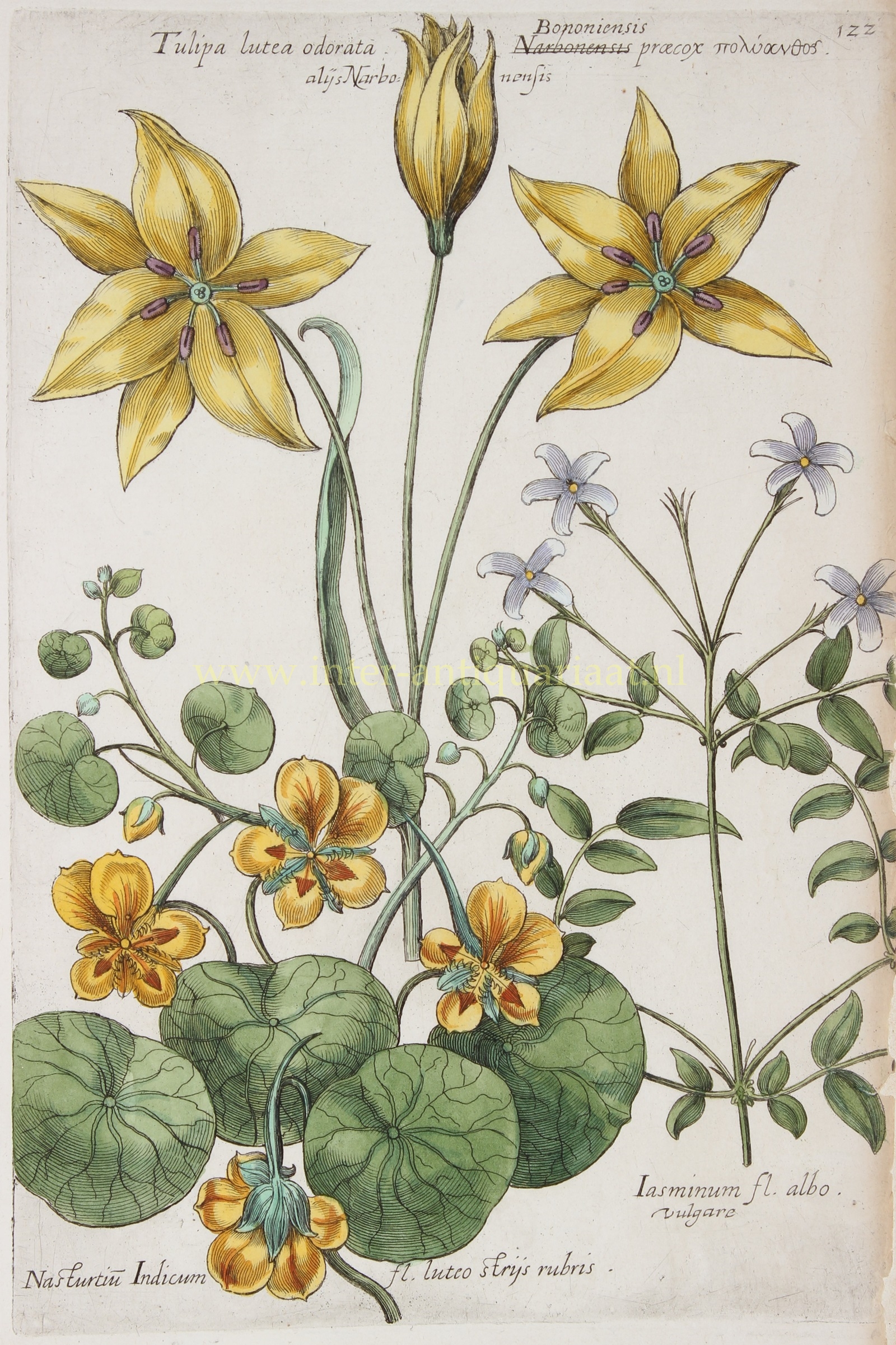Tulips, Indian Nasturtium, Jasmin – Johann Theodor de Bry + Matthäus Merian, 1641
€650
EARLY FRAGRANT TULIP FROM BOLOGNA, ALSO KNOWN AS NARBONNE TULIP / INDIAN NASTURTIUM / COMMON JASMIN
“Tulipa lutea odorata Bononiensis praecox aliis Narbonensis / Nasturtium Indicum fl. luteo strijs rubris / Jasminum vulgare fl. albo” copper engraving made in 1611 by Johann Theodor de Bry and published by Matthäus Merian in 1641 as part of his “Florilegium renovatum et auctum”. Coloured by a later jand. Size (platemark): 27 x 18.6 cm.
Johann Theodor de Bry (1561–1623) was the most prominent member of a family of engraver-publishers. The de Brys lived in Frankfurt, then a center for the production and sale of illustrated books. In 1611, De Bry produced the Florilegium Novum, a wonderful early comprehensive botanical plate work. This book with its handsomely engraved plates was among the most famous flower books of the period.
In response to its great popularity an expanded edition of the work was published in 1641 by Matthäus Merian the Elder (1593–1650): Florilegium renovatum et auctum – “A renewed and expanded collection of various and extremely rare seeds, flowers, and plants, praised for their beauty, fragrance, usefulness, variety, and distinctive characteristics. Not only those known to us here, but also those unknown to antiquity and the old world, brought forth from its fertile bosom. Exquisite illustrations, rendered with the utmost care from life, provided with their own true and authentic names.”
Merian was a superbly gifted Swiss engraver who worked in various cities throughout France before locating to Frankfurt to work for the De Brys. After De Bry’s death in 1623, Merian took over his publishing house. Merian was the father of Maria Sibylla Merian, who became a an exceptional artist/naturalist in her own right.
Price: Euro 650,-


